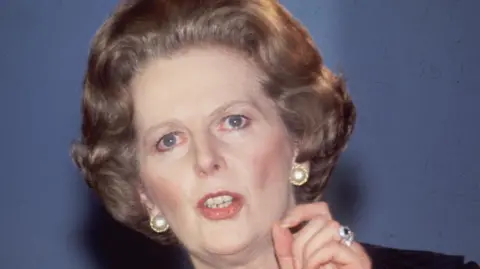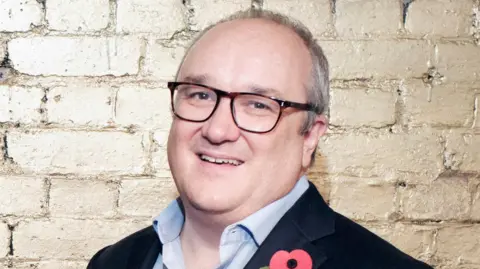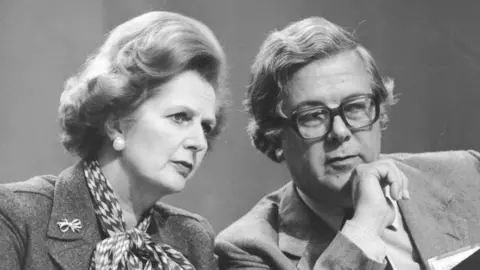From BBC News
By- David McKenna

Margaret Thatcher's time as prime minister might not seem like the most obvious inspiration for an opera, but for some she is a diva.
The Rest is History podcast co-host and historian Dominic Sandbrook is working with composer Joseph Phibbs to produce a two-act show entitled Mrs T.
As well as covering her time in Downing Street, the opera aims to explore the Iron Lady's character and personality away from the public gaze.
"I feel she really lends herself to operatic treatment. She was a very theatrical character, in many ways," Phibbs told the BBC.
The opera has been described as "an intimate exploration of one of the most polarising and influential figures in British politics".
 PA Media
PA MediaPhibbs said he came up with the idea after watching a documentary about the Grantham-born politician.
"As is the case with many composers, I'm always thinking of potential subjects, and it occurred to me, 'Why not have Margaret Thatcher as the main character in an opera?'
"Initially, I kind of thought the idea was a bit crazy, but the more I thought about it the more intrigued I became.
"She was, after all, the first female prime minister, and in her centenary year it just seemed a perfect time to get this up and running."
'Lady Macbeth figure'
He said the opera would feature "key scenes" and people from Thatcher's time in office, including Geoffrey Howe, whose resignation speech as chancellor in 1990 was widely seen as a central factor in her downfall.
Baroness Elspeth Howe of Idlicote, wife of Sir Geoffrey, also features.
"Howe's wife had no time for Thatcher towards the end, especially because of the way Thatcher had humiliated him," the composer said.
"She is a type of Lady Macbeth figure."
Other scenes include Thatcher dancing with Ronald Reagan, which Phibbs said would add a bit of "American colour to the piece", along with her meeting former Soviet leader Mikhail Gorbachev.
Phibbs said they also hoped to portray the former prime minister's personal assistant, Cynthia Crawford.
"One of the things I really want to explore is Thatcher as a person, as a woman," he said.
"What she was like behind closed doors – not just the public persona that we all know.
"The politics is obviously central to the 11 years, but I see that as a backdrop.
"It's about character and I'm hoping it will appeal to a wide audience."
 Geoff Bruce/Central Press/Getty Images)
Geoff Bruce/Central Press/Getty Images)Although Thatcher has been depicted numerous times on stage and screen, including in the recent Channel 4 drama, Brian and Maggie, this is the first time her tenure as prime minister has been the subject of an opera, Phibbs said.
He said Sandbrook, who he had met over a cup of coffee to discuss the production, had been "very enthusiastic about the idea" and had "devised a superb synopsis for the whole opera".
Sandbrook told the BBC the opera was not a political commentary but was, instead, intended to portray "the drama of the time".
This is Sandbrook's first libretto but he has previously written extensively about the former prime minister.
He said the opera included a scene referencing a letter she wrote to her speechwriter Sir Ronald Millar in 1978 after seeing Andrew Lloyd Webber's Evita.
It read: "If [the Peronists] can do that without any ideals, then if we apply the same perfection and creativeness to our message, we should provide quite good historic material for an opera called Margaret in 30 years' time."
Mrs T will be directed by Lucy Bradley, with mezzo-soprano Lucy Schaufer in the title role.
Author, journalist and radio presenter Libby Purves will feature as a newsreader.
A showcase event is due to be held in the autumn.
Listen to highlights from Lincolnshire on BBC Sounds, watch the latest episode of Look North or tell us about a story you think we should be covering here.
Comments
Post a Comment